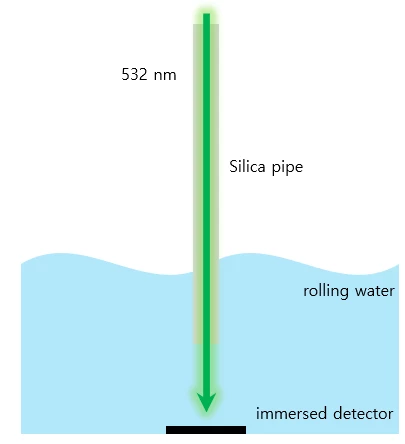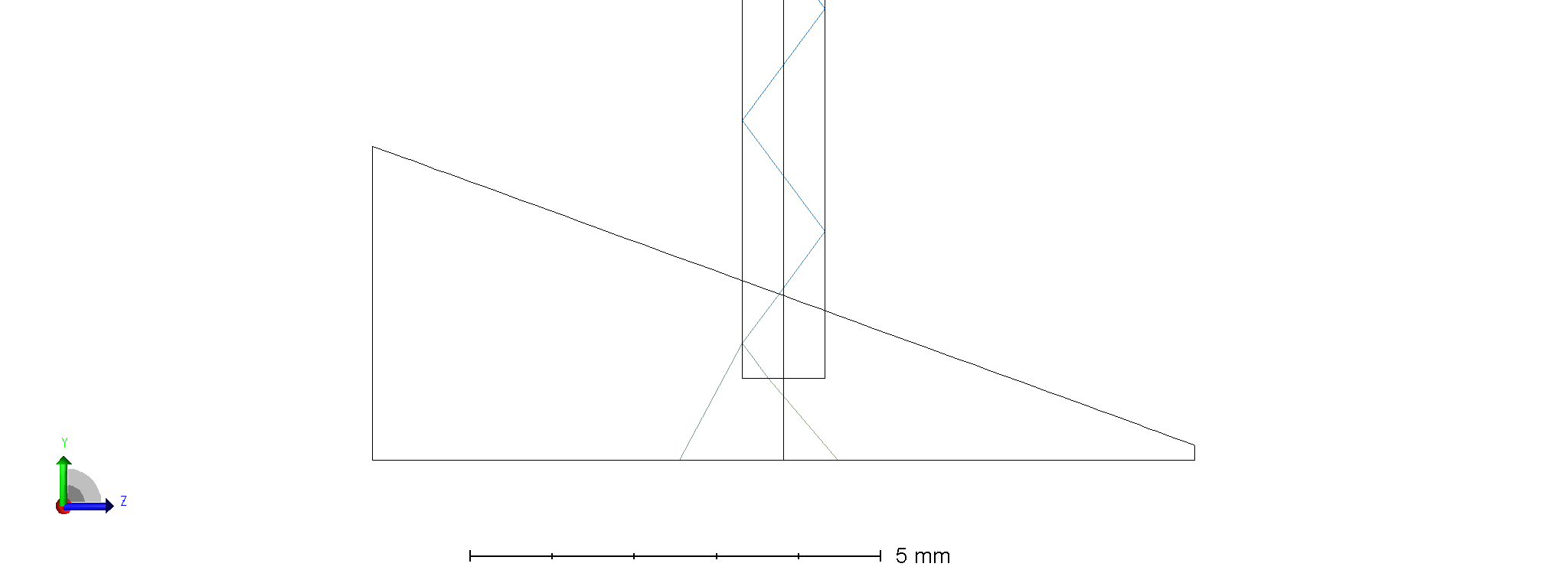Hi all.
I want to make a model as shown below.
A beam whose wavelength is 532 nm is incident to the light pipe placed vertically to the bottom.
The exit port of the light pipe and the detector are immersed in the water.
Even though the water is rolled by some vibrations, the light would not be refracted because the tip of the pipe is under the moving surface.

So, I configured like attached zemax model.
The rolling water was simplified to a simple wedge.
However, as you see the Layout, the rays are refracted at the surface of the rolling water. It is the wrong result. And if the beam is tilted a little, it has to be refracted at the tip of the pipe, not at the surface of the water.
Could you please solve this simple problem?
Thanks.




